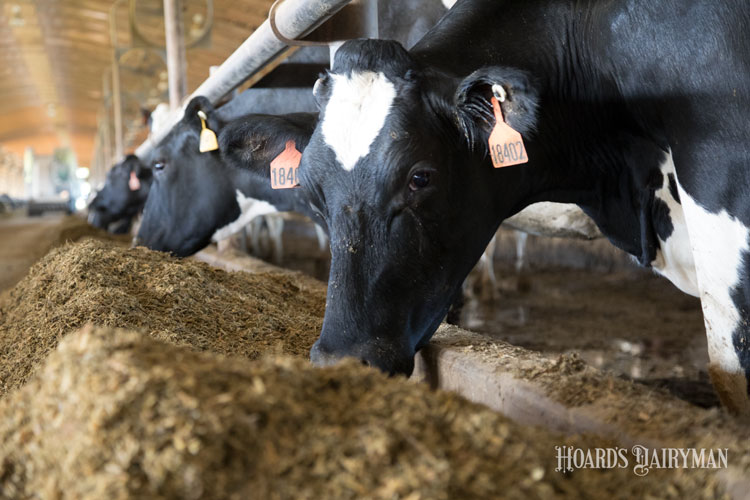
In the past month, news has come out that vitamin A and E shortages will ring in 2018 as vitamin production was interrupted in late 2017. A plant fire in Germany and shifting production in China caused the perfect storm for dramatically rising vitamin costs that may linger into summer of 2018.
If you rely on vitamins in your rations to limit mastitis, abortions, retained placentas, and metritis, leading nutrition experts recommend analyzing your current inclusion rates.
The Ohio State University’s Bill Weiss suggests prioritizing prefresh cows at National Research Council (NRC) recommended levels of 50,000 to 70,000 international units (IU) per day for vitamin A and 2,000 IU per day for vitamin E.
The University of Illinois’ Mike Hutjens recommends continuing 1,000 IU per day of added vitamin E until cows are diagnosed pregnant and 600 IU per day for mid- and late-lactating cows.
“I would try to provide some supplemental vitamins A and E to all cows, but lactating cows would be the lowest priority,” said Weiss in an Ohio State extension release. “These cows consume a lot of feed, and the feed is usually better quality than that fed to dry cows. Lactating diets can contain substantial basal vitamin E and B-carotene (a precursor to vitamin A).”
Hutjens shared, “Pasture provides adequate levels of vitamin A and carotene. Another strategy for vitamin E is to use organic selenium as it has higher availability and biological function.”
Finally, both recommend checking the farm’s vitamin inclusion rates as diets are typically formulated well above NRC guidelines. If inclusion rates are pulled back to NRC guideline rates, the benefits of vitamin A and E can still be realized at lower costs.








